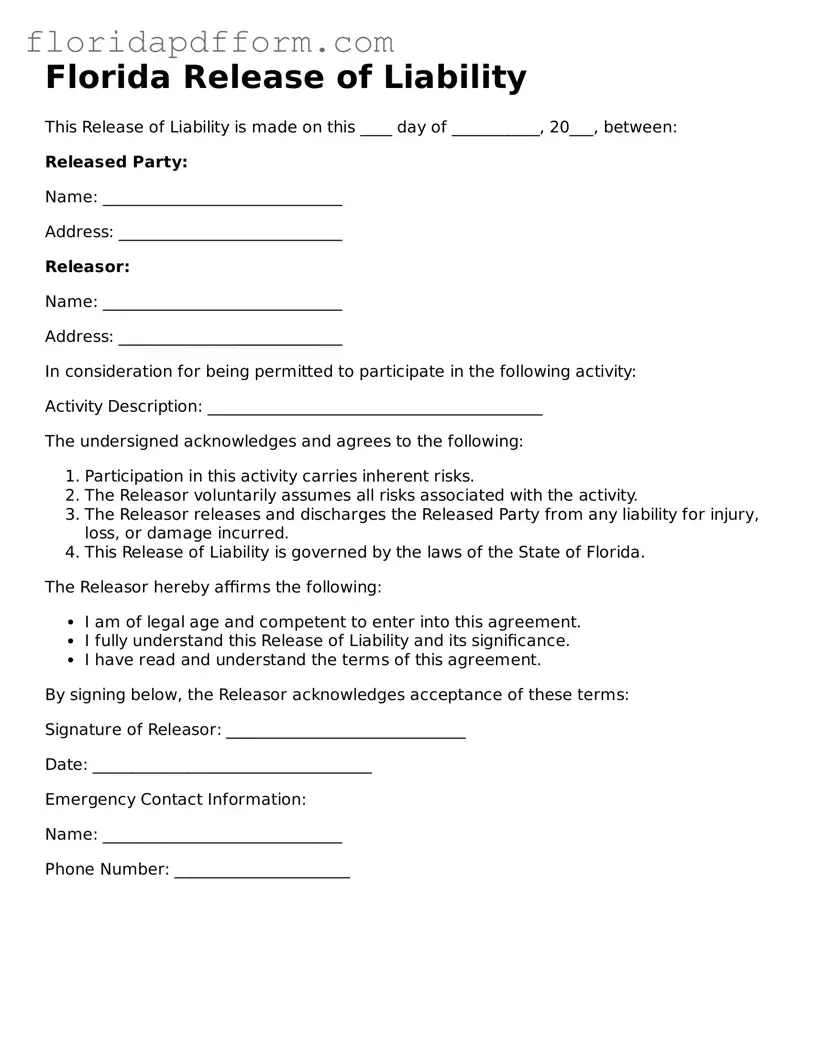Blank Release of Liability Template for Florida
The Florida Release of Liability form is a legal document that protects individuals and organizations from being held responsible for injuries or damages that may occur during specific activities. This form is essential for anyone participating in potentially risky events, as it ensures that participants acknowledge the risks involved. Understanding its importance can help you make informed decisions about your safety and rights.
Launch Editor
